Spain’s Cíes Islands: The Best Beach in the World?
As last school year was drawing to an end, the weather had heated up and the sun had decided to come out, so a handful of friends and I decided to hop on the train south to Vigo to catch the next ferry for the Cíes Islands, which are home to what was called the “world’s best beach” in 2007 by the British newspaper The Guardian. It was a glorious daytrip from Santiago and a much-needed break from the rolling hills and rain of inland Galicia.
The three Cíes islands form an archipelago that guards the entrance to an estuary of the Atlantic Ocean called the Ría de Vigo. From north to south, the three islands are named Monteagudo (“pointy mountain”), Montefaro (“lighthouse mountain”), and San Martiño (“St. Martin’s”).
The beaches on the Cíes Islands (pronounced “THEE-ays” [ˈθi.es]) are so wonderful partly because they belong to the Atlantic Islands of Galicia National Park; i.e., they have been protected from the runaway tourism and development that has happened to beaches in Benidorm or Marbella on the Mediterranean coast. Here, the natural beauty of these coastal islands has been more or less preserved and there are no high-rise hotels to ruin the views. And with a daily limit of 2,200 visitors to the islands, their beaches are never mobbed by sunbathers.
These beaches are basically perfect: extremely fine, white sand covers the half dozen or so beaches that stretch around the islands’ perimeter, and waves of turquoise water gently splash along the beaches. The only way they could be improved is if the ocean water weren’t so ice-cold!
But, in all likelihood, the Cíes Islands’ can claim to have the “world’s best beach” probably only because a journalist for the Guardian had to fit in a sponsored link for a resort company in an article and happened to put the Cíes first instead of nine other equally deserving beaches from around the world. In another universe, they might have been second and the city of Vigo’s tourism board wouldn’t have been able to take a random news article and run with it. But I digress.
Besides being a beach bum and soaking up the sun, there’s actually a lot more you can do on the islands. They’re fairly mountainous, so there are loads of hiking trails that go up to the summits, trace around the sides, and take you into cool, shaded forests. On the central Montefaro Island, for example, you can make the hike up to an impressive lighthouse and take in some really nice views of the surroundings. Plus, there are some cool rock formations to crawl around on and some decidedly Caribbean-feeling trees and bushes.
The Cíes Islands, being a protected national park, are home to colonies of seagulls that number in the tens of thousands. The islands’ soil has thus been fertilized by seagull guano, which is rich in nitrogen and phosphate—which means the Cíes are even more green than green Galicia. If you manage to escape getting pooped on, there are some great lookout points where you can satisfy your birdwatching needs on the western cliffs of Montefaro Island.
I had already left the country in June, but around that time, some of my friends from Santiago actually went camping here! As there are no hotels on the islands, this is the only way to spend more than a day at a time here, and I can’t think of a more chill way to go camping than with the ocean on one side and a lush forest on the other. Tents are available to rent from the people who manage the islands.
Catch a ferry from the two main cities on either side of the Ría de Vigo estuary: Cangas, on the north side of the estuary, or Vigo, on the south side. I recommend Vigo, as it has a major train station and an airport—plus, the Vigo-Guixar train station is super close to the maritime station where the ferries depart from. You can purchase tickets online for any of three ferry companies: Cruceros Rías Baixas, Mar de Ons, or Naviera Nabia.
The Cíes Islands are only accessible from May through October and during Semana Santa (Holy Week) before Easter, so plan accordingly.
Do you agree that the Cíes Islands have the best beaches in the world? Duke it out in the comments below!
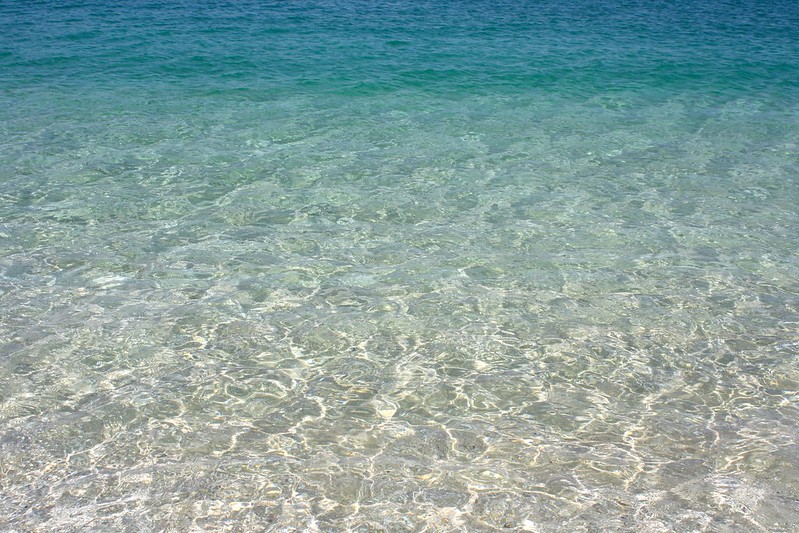
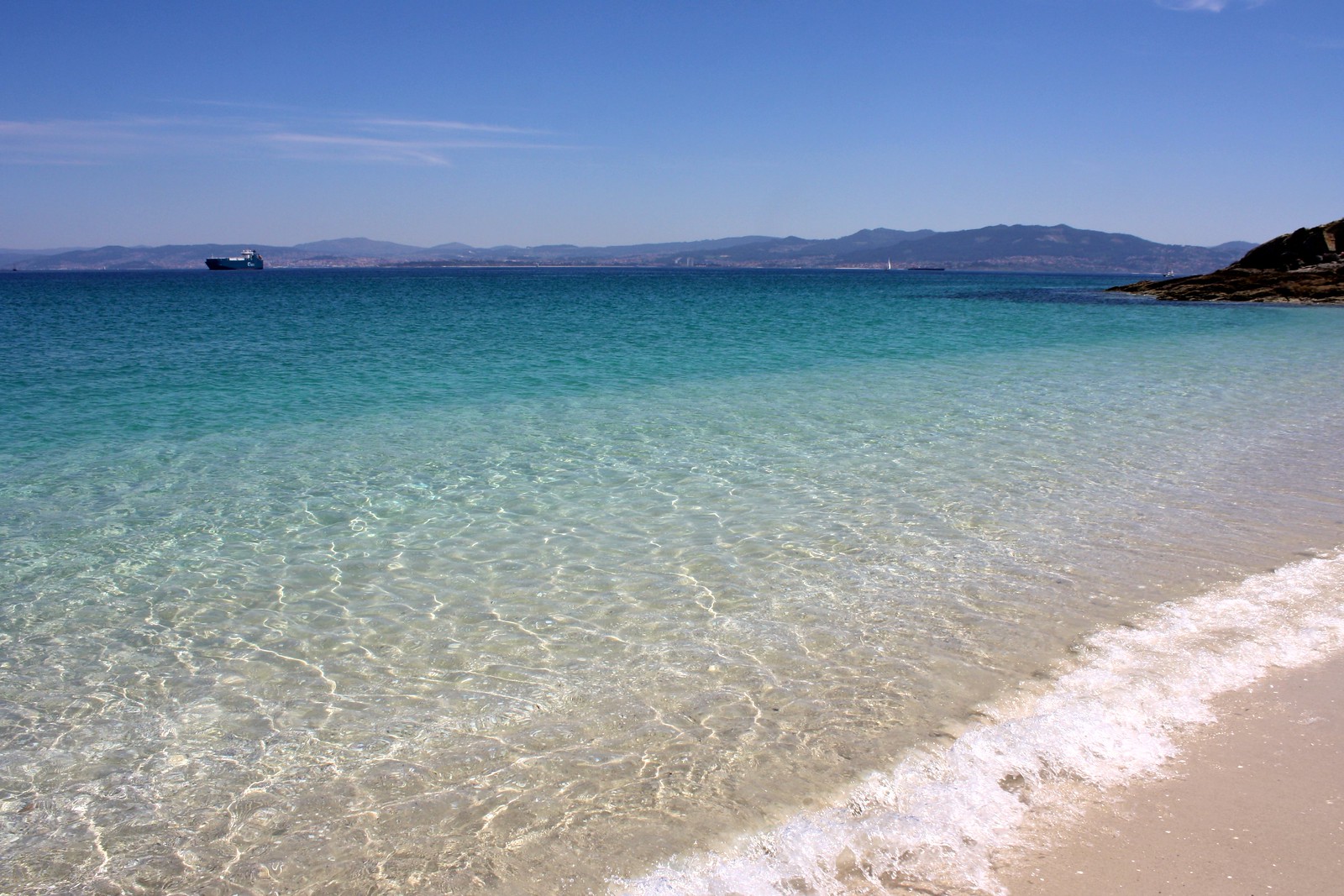 |
| No caption necessary |
The three Cíes islands form an archipelago that guards the entrance to an estuary of the Atlantic Ocean called the Ría de Vigo. From north to south, the three islands are named Monteagudo (“pointy mountain”), Montefaro (“lighthouse mountain”), and San Martiño (“St. Martin’s”).
Why are the beaches the best?
 |
| Sandbar connecting the middle and northern islands |
The beaches on the Cíes Islands (pronounced “THEE-ays” [ˈθi.es]) are so wonderful partly because they belong to the Atlantic Islands of Galicia National Park; i.e., they have been protected from the runaway tourism and development that has happened to beaches in Benidorm or Marbella on the Mediterranean coast. Here, the natural beauty of these coastal islands has been more or less preserved and there are no high-rise hotels to ruin the views. And with a daily limit of 2,200 visitors to the islands, their beaches are never mobbed by sunbathers.
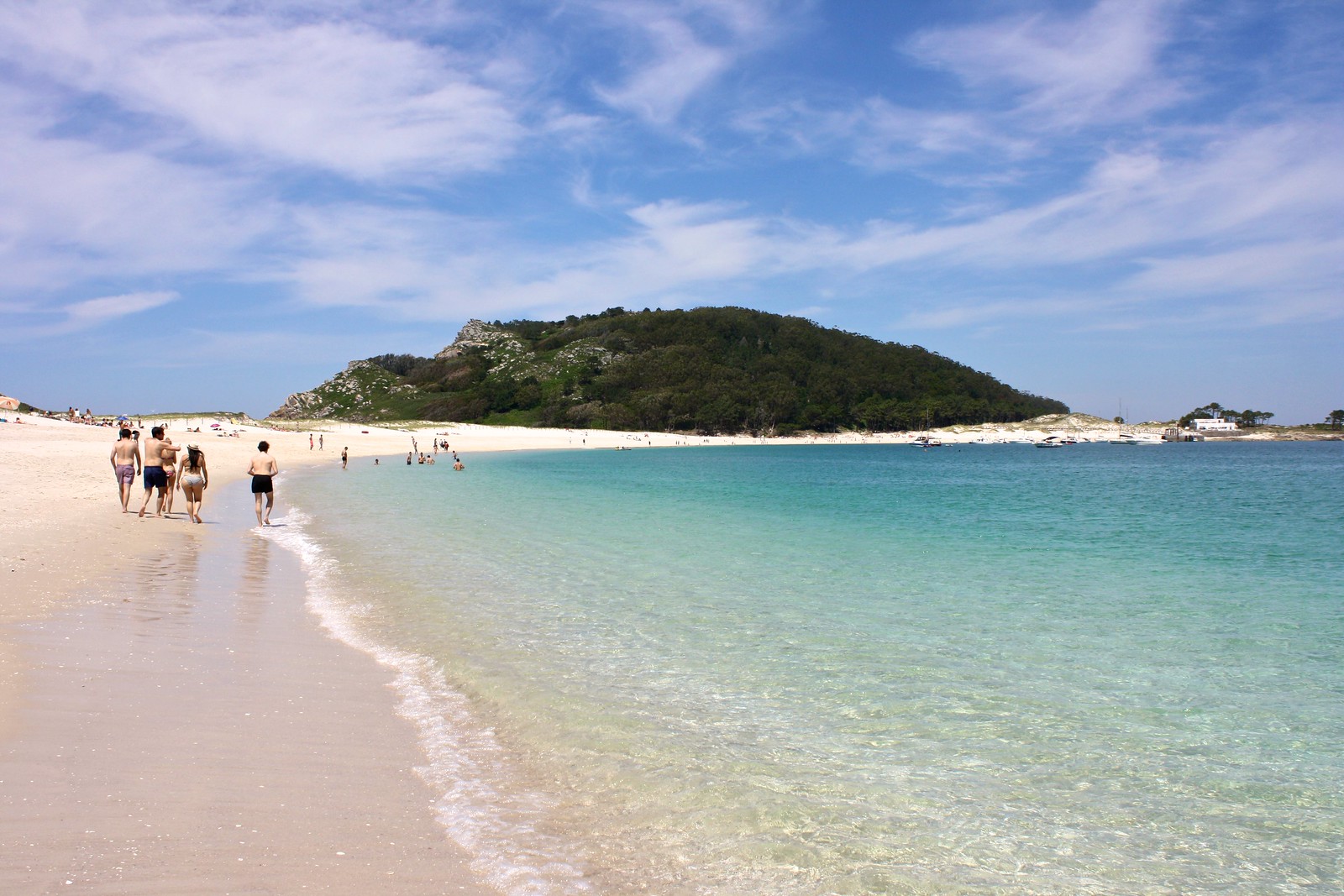 |
| Perfect turquoise water |
These beaches are basically perfect: extremely fine, white sand covers the half dozen or so beaches that stretch around the islands’ perimeter, and waves of turquoise water gently splash along the beaches. The only way they could be improved is if the ocean water weren’t so ice-cold!
 |
| Seagulls love the soft white sand, too! |
But, in all likelihood, the Cíes Islands’ can claim to have the “world’s best beach” probably only because a journalist for the Guardian had to fit in a sponsored link for a resort company in an article and happened to put the Cíes first instead of nine other equally deserving beaches from around the world. In another universe, they might have been second and the city of Vigo’s tourism board wouldn’t have been able to take a random news article and run with it. But I digress.
What else is there to do?
 |
| Trails up the mountain |
Besides being a beach bum and soaking up the sun, there’s actually a lot more you can do on the islands. They’re fairly mountainous, so there are loads of hiking trails that go up to the summits, trace around the sides, and take you into cool, shaded forests. On the central Montefaro Island, for example, you can make the hike up to an impressive lighthouse and take in some really nice views of the surroundings. Plus, there are some cool rock formations to crawl around on and some decidedly Caribbean-feeling trees and bushes.
 |
| Seagulls also like to hike |
The Cíes Islands, being a protected national park, are home to colonies of seagulls that number in the tens of thousands. The islands’ soil has thus been fertilized by seagull guano, which is rich in nitrogen and phosphate—which means the Cíes are even more green than green Galicia. If you manage to escape getting pooped on, there are some great lookout points where you can satisfy your birdwatching needs on the western cliffs of Montefaro Island.
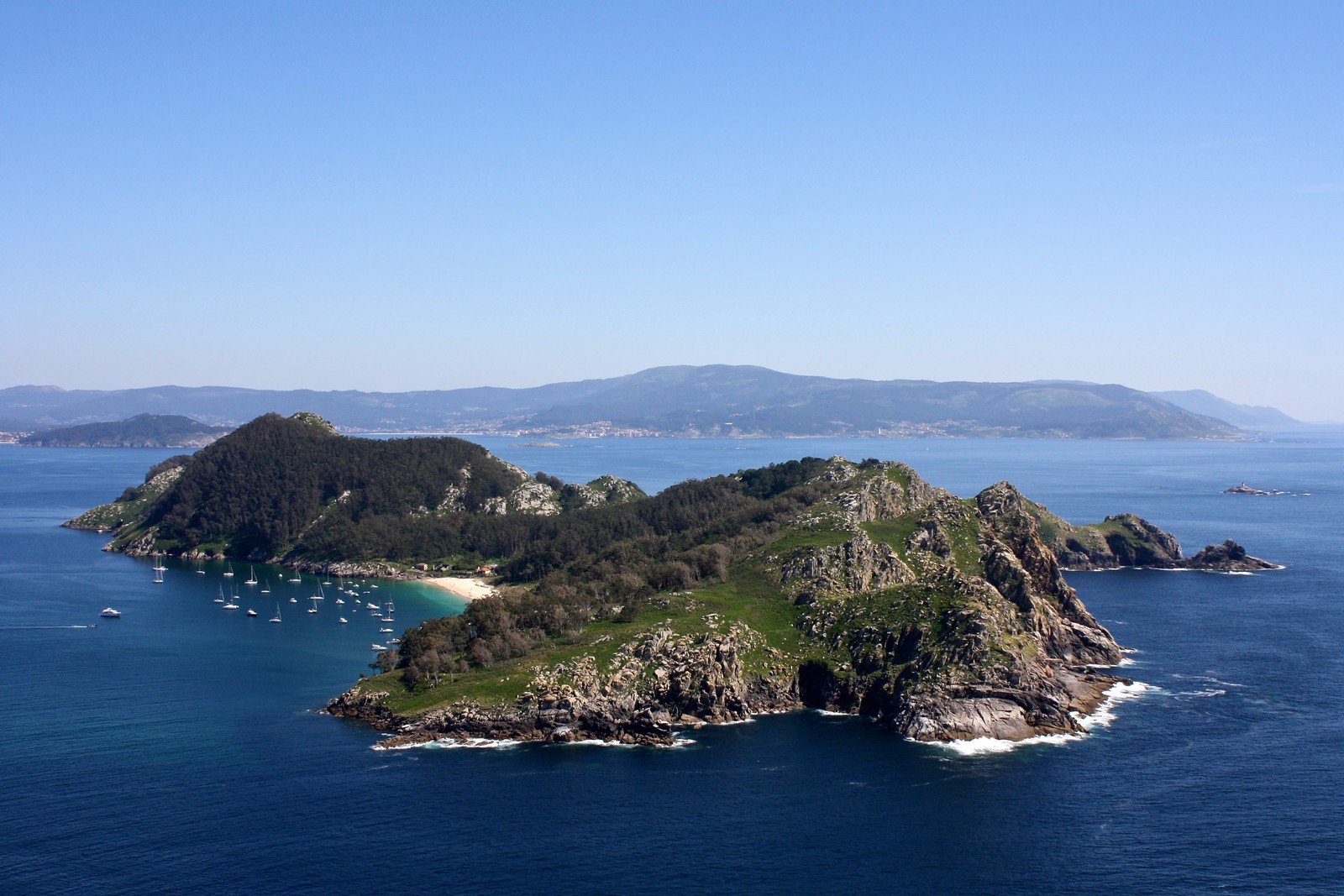 |
| The southern island |
I had already left the country in June, but around that time, some of my friends from Santiago actually went camping here! As there are no hotels on the islands, this is the only way to spend more than a day at a time here, and I can’t think of a more chill way to go camping than with the ocean on one side and a lush forest on the other. Tents are available to rent from the people who manage the islands.
How to get there
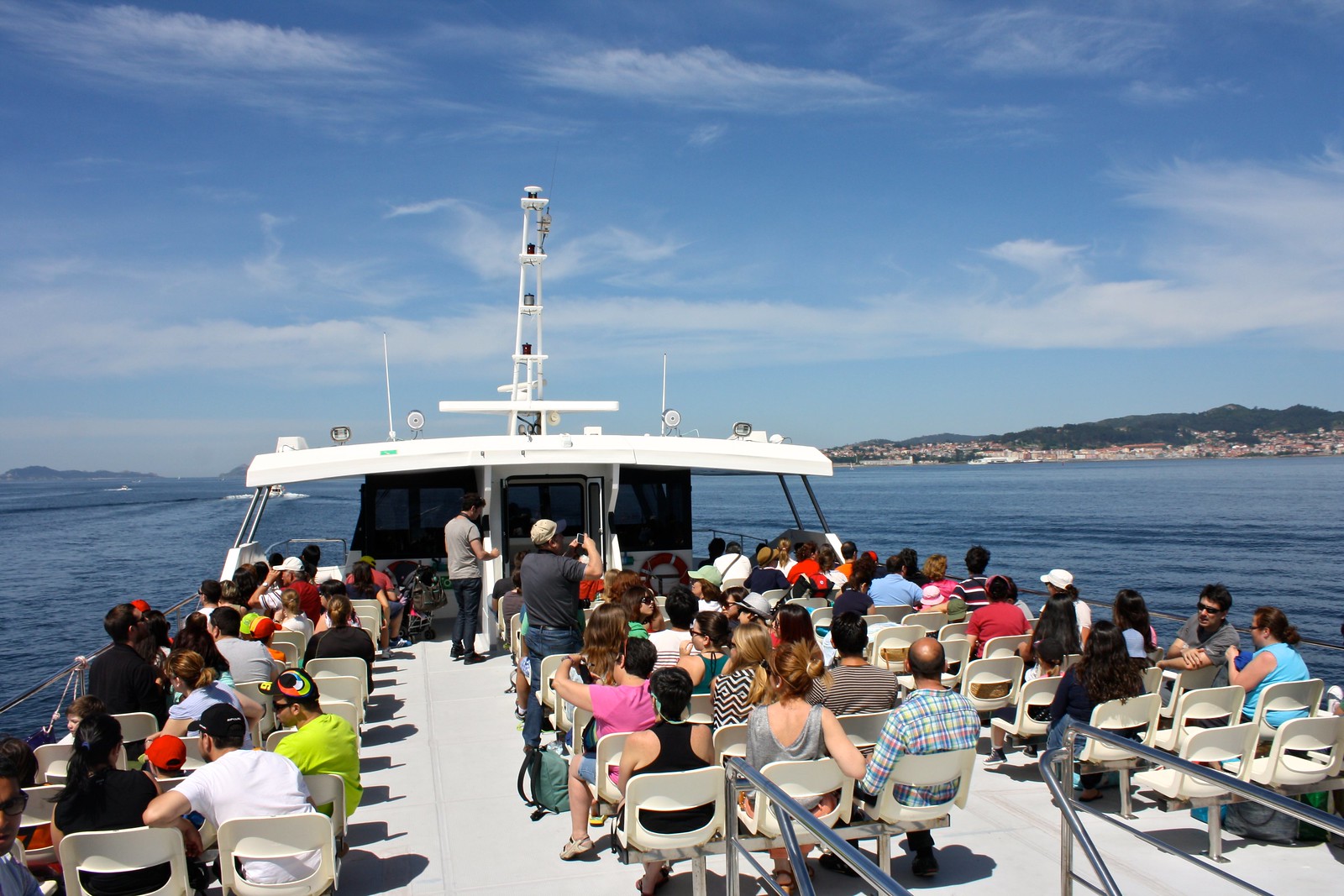 |
| On the ferry |
Catch a ferry from the two main cities on either side of the Ría de Vigo estuary: Cangas, on the north side of the estuary, or Vigo, on the south side. I recommend Vigo, as it has a major train station and an airport—plus, the Vigo-Guixar train station is super close to the maritime station where the ferries depart from. You can purchase tickets online for any of three ferry companies: Cruceros Rías Baixas, Mar de Ons, or Naviera Nabia.
The Cíes Islands are only accessible from May through October and during Semana Santa (Holy Week) before Easter, so plan accordingly.
Do you agree that the Cíes Islands have the best beaches in the world? Duke it out in the comments below!
